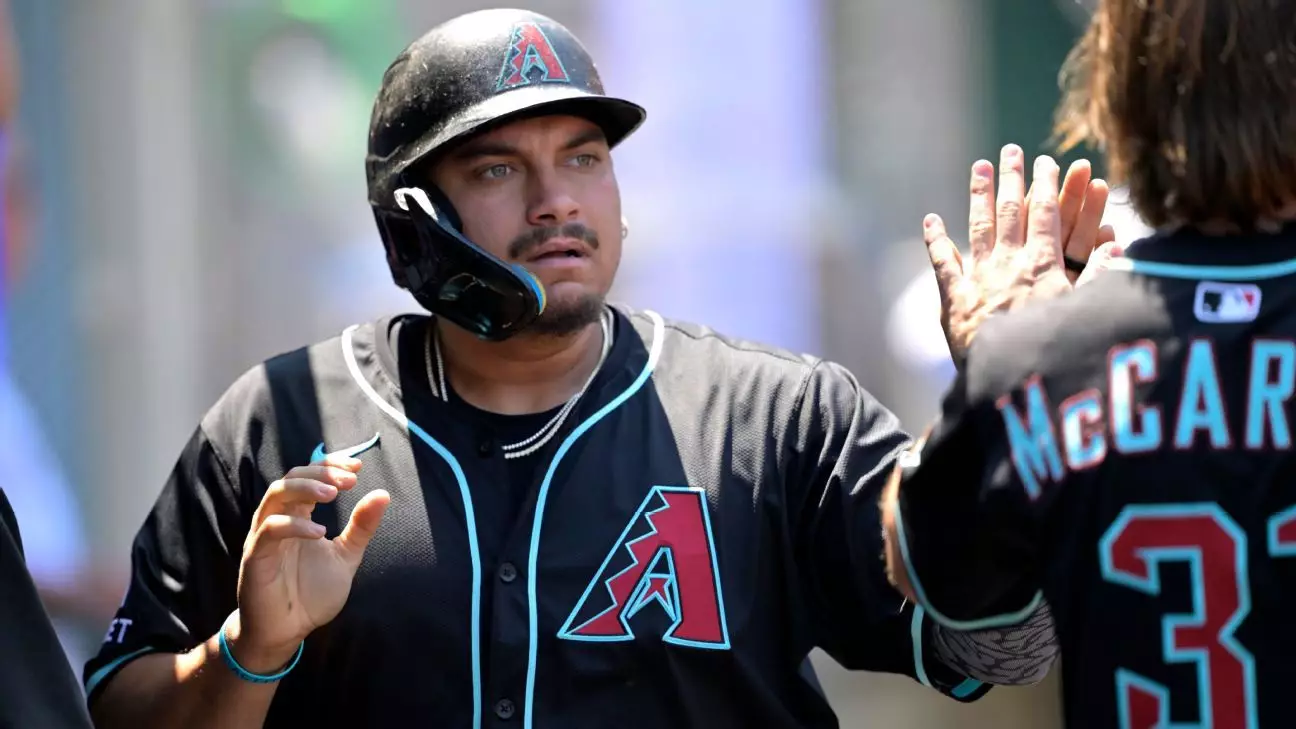In a decisive bid to turn their postseason aspirations into reality, the Seattle Mariners have orchestrated a significant trade that underscores their commitment to contending this season. Acquiring first baseman Josh Naylor from the Arizona Diamondbacks, this move isn’t just about adding talent; it’s a statement of intent. By giving up promising prospects like Brandyn Garcia and Ashton Izzi, Seattle demonstrates a willingness to prioritize immediate success over long-term development. This trade is emblematic of a broader philosophy that emphasizes aggressive roster upgrades, showcasing a team eager to capitalize on their window of opportunity.
This trade reflects a strategic pivot for the Mariners—they are not merely tinkering at the margins but are making bold decisions to elevate their competitive edge. Naylor’s addition is particularly impactful; he’s a potent power bat who fits perfectly into Seattle’s lineup, especially considering their recent history of postseason contention. The trade also signals that the Mariners see the current season as their best chance for a deep playoff run, refusing to rest on their laurels or left their fate to the unpredictable summer waiver wire. It’s a move grounded in confidence and belief that they can overtake division rivals and secure a coveted postseason spot.
Naylor’s Impact: A Tactical Upgrade for Seattle
Josh Naylor is more than just a slugger; he’s a player who brings a nuanced combination of power, plate discipline, and low strikeout rates to the Mariners. His recent season stats—.292/.360/.447 with 11 home runs and 59 RBIs over 93 games—highlight a player in his prime, capable of producing clutch hits and providing stability in the middle of the order. His versatility as a designated hitter and first baseman further enhances his value, offering manager Scott Servais flexibility in lineup construction.
Naylor’s demeanor on the field is anything but quiet—his fiery passion often ignites the team and energizes the dugout. This emotional intensity can serve as a rallying point, especially during crucial moments in the postseason. His experience and consistent performance, particularly with a low strikeout percentage, make him a strategic fit for a team looking to balance power with contact. The Mariners’ decision to prioritize a player like Naylor underscores their focus on efficiency and reliability, crucial for a team aiming to break a 20-year postseason drought.
Furthermore, Naylor’s age—just 28—positions him as a key piece for the next few seasons, not merely a rental. For Seattle, acquiring such a steady offensive contributor aligns with their broader goal: constructing a competitive squad capable of sustained success. This move hints at the Mariners’ awareness of their current strengths and weaknesses and their willingness to make confident, strategic investments to maximize their window.
Arizona’s Postseason Strategy—Trading High-Value Assets for Future Gains
The Diamondbacks’ willingness to trade Josh Naylor sends a strong signal about their current state of flux. Once a rising contender aiming for a return to their 2023 form, Arizona now seems willing to pivot, focusing on rebuilding and acquiring prospects with high upside. Their recent sales of key players like Naylor, and their openness to moving other pending free agents, reveal a club prioritizing future flexibility over immediate competitiveness.
This approach is both pragmatic and deeply strategic. With potential departures like Merrill Kelly and Zac Gallen looming, Arizona’s focus has shifted towards stockpiling prospects that can underpin a more sustainable competitive cycle. The acquisition of promising pitchers like Garcia and Izzi exemplifies their intent—bringing in young talent with upside who can be developed over time, setting the stage for future success rather than rushing into a win-now mentality.
Arizona’s core still boasts talented players like Corbin Carroll and Ketel Marte, but losses at key pitching positions reflect the team’s acknowledgment of the need for a rebuild or at least a strategic adjustment. The trade market offers the Diamondbacks an opportunity to recoup some of the value they’re sacrificing now, even if it delays their immediate playoff push. For Arizona, these decisions are about laying a foundation for sustainable success in the seasons ahead, even if it means sacrificing this year’s postseason shot.
Implications for the Broader Market and Future Outlook
Seattle’s decisive action sends a ripple through the trade market, signaling a team that’s not afraid to set bold targets and back them up with decisive moves. Their unwillingness to deplete their best prospects demonstrates the strength of their farm system—a rare asset that affords them confidence and flexibility. The Mariners are betting on their ability to develop talent and make timely acquisitions, asserting a belief that a balanced, talent-rich roster can push them further in October.
On the flip side, the Diamondbacks’ openness to trades reveals a challenging reality—a need to retool and develop a more resilient roster heading into the postseason and beyond. Their focus on pitching prospects highlights the importance of building a future-proof team, especially given the uncertainties surrounding their current rotation. Both teams’ strategies reflect a shifting landscape in Major League Baseball, where postseason success increasingly hinges on evaluating risk, potential, and long-term viability.
What lies ahead is a frenetic final month of trade activity, focused on balancing immediate needs with future growth. Seattle’s aggressive stance may inspire other contenders to follow suit, risking short-term prospects in pursuit of a postseason breakthrough. Meanwhile, Arizona’s cautious, prospects-focused approach reminds teams that not all moves are about immediate glory—sometimes, patience and strategic rebuilding are the true paths to sustained success.
In essence, these developments underline a broader truth: in baseball’s modern era, smart teams adapt and evolve, ready to seize opportunities. The Mariners’ boldness and the Diamondbacks’ strategic patience alike typify the evolving nature of the trade deadline—a dynamic blend of ambition, foresight, and calculated risk.


Leave a Reply